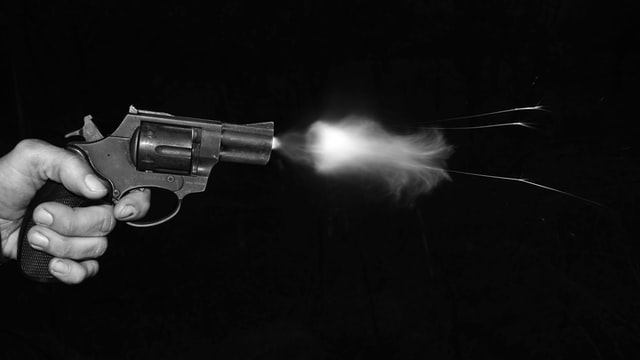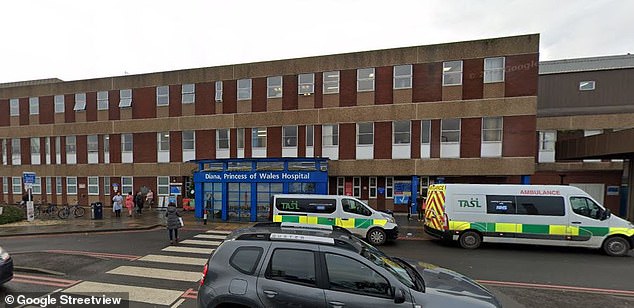The U.S. has been rocked by dozens of mass shootings over the last several weeks, creating a disturbing trend of violence across the country. Gun violence has long been a problem in America. Over time, we’ve seen dozens of tragic headlines, angry op-eds, and fierce debates over the Second Amendment, but we rarely see the bloody aftermath of these shootings. The press will usually cover every detail of the shooting, but the bodies stay behind closed doors.
That could change if this spree of violence continues. Public policy experts say showing the aftermath of these shootings could encourage more people to take action to prevent them.
Dr. Amy Goldberg is a trauma surgeon at Temple University Hospital in North Philadelphia, which treats more gunshot victims than any other in the state. It’s also located in one of the deadliest major cities in the country. With over 30 years of experience under her belt, Goldberg has seen more than her fair share of gunshot wounds. Temple’s trauma team has a reputation for repairing some of the worst gun-related injuries. She recently spoke about what bullets do to the body.
Goldberg serves as the chair of Temple’s Department of Surgery, one of only 16 women in America to hold that position at a hospital. She admits she didn’t know much about guns or gun violence when she started working at Temple back in the late 1980s. She decided to get into surgery because she loved anatomy and the miracle that is life.
“It’s a miracle,” she said. “The creation of a person, you know. It’s the heart beating and the lungs bringing air. It is so miraculous.”
She remembers treating a young boy that had been shot in the chest during the second year of her residency. The boy’s brother picked up a gun that was lying around and shot him by accident.
Goldberg had to tell the boy’s mother that her son didn’t make it, but the mother didn’t understand, so Goldberg had to be direct.
“He died. We’re so sorry. He died,” she told her. “You have to find a very compassionate way of being honest,” she said.
When it comes to gun violence, Goldberg says that most people assume that the bullet itself is the problem, but the real damage comes from the bullet ripping through muscle, vessel, organs, and bone. The bullet can usually stay in the body just fine, but the bleeding needs to be contained – even if the patient is awake and screaming in pain. Goldberg typically has to push a tube into the patient’s chest cavity through a deep incision without the use of anesthesia because there’s no time. If the heart has stopped, she has to get it working again before the patient dies from a lack of oxygen.
In some cases, the surgeons will crack the patient’s chest open right in the trauma center. She uses a scalpel to make an incision below the nipple and cuts six to 10 inches down the torso, through the skin, fatty tissue, and muscle. She then inserts a rib-spreader to access the chest cavity.
Other times she may have to break the patient’s sternum, also known as a bilateral thoracotomy. Goldberg will hit the top of a Lebsche knife with a hammer to cut through the sternum.
“You never forget that sound,” one of the nurses said. “It’s like a tink, tink, tink. And it sounds like metal, but you know it’s bone. You know like when you see on television, when people are working on the railroad, hammering the ties?”
“It’s just the worst,” said Scott Charles, the hospital’s trauma outreach coordinator and Goldberg’s longtime friend. “They’re breaking bone. And everybody—every body—has its own kind of quality. And sometimes there’s a big guy you’ll hear, and it’s the echo—the sound that comes out of the room. There’s sometimes when it doesn’t affect me, and there are some times when it makes my knees shake, when I know what’s going on in there.”
Once she has access to the organs, she can assess the damage. If the heart has stopped, she may have to perform an open cardiac massage by literally holding the heart in her hand. She may also put a metal clamp on the heart or lungs to stop bleeding in the chest cavity.
“These crossing bullets are just so challenging,” she said. “Where is the injury? Is it in the chest? Is it in the abdomen? You’re down there, looking, and sometimes you find it, and sometimes you don’t. And sometimes it just really hurts as you work your way through.” She means that it hurts when patients suffer. It hurts them and it hurts her.
Some patients die quickly while others suffer from a range of life-threatening complications. Studies show around 80% of the people shot in Philadelphia survive their injuries because trauma surgeons like Goldberg will save them. But surviving is usually only the beginning of their suffering. Some lose limbs, while others have to carry around a catheter for the rest of their life because they can no longer defecate on their own.
Goldberg has tried to prevent gun violence and ease her patients’ suffering during her time as chief of surgery. She recently created an intervention program to give gunshot victims extra counseling while they’re in the hospital.
“They come in, they’re very scared,” Goldberg said. “‘Am I gonna die? Where’s my Mom?’ Then, as soon as they would recover, they would not be so scared anymore, which maybe wasn’t good.”
The patients are even given the opportunity to watch a video of their own surgery. All procedures are filmed for quality control. About half say yes. Patients also receive counseling to help with any PTSD symptoms as well as case management services to help them get a degree or a job.
The program has become somewhat controversial. Some doctors believe it’s cruel to let patients watch a video of their surgery. But Goldberg says counselors aren’t there to pass judgment. They don’t ask questions about the person’s past. They are just there to help them move forward.
“The only way I know how to deal with a problem is, let’s break it down. Let’s try to educate,” she said.




